What kind of Manning coffee beans are the best? Indonesia PWN Gold Mante Coffee Downing Flavor
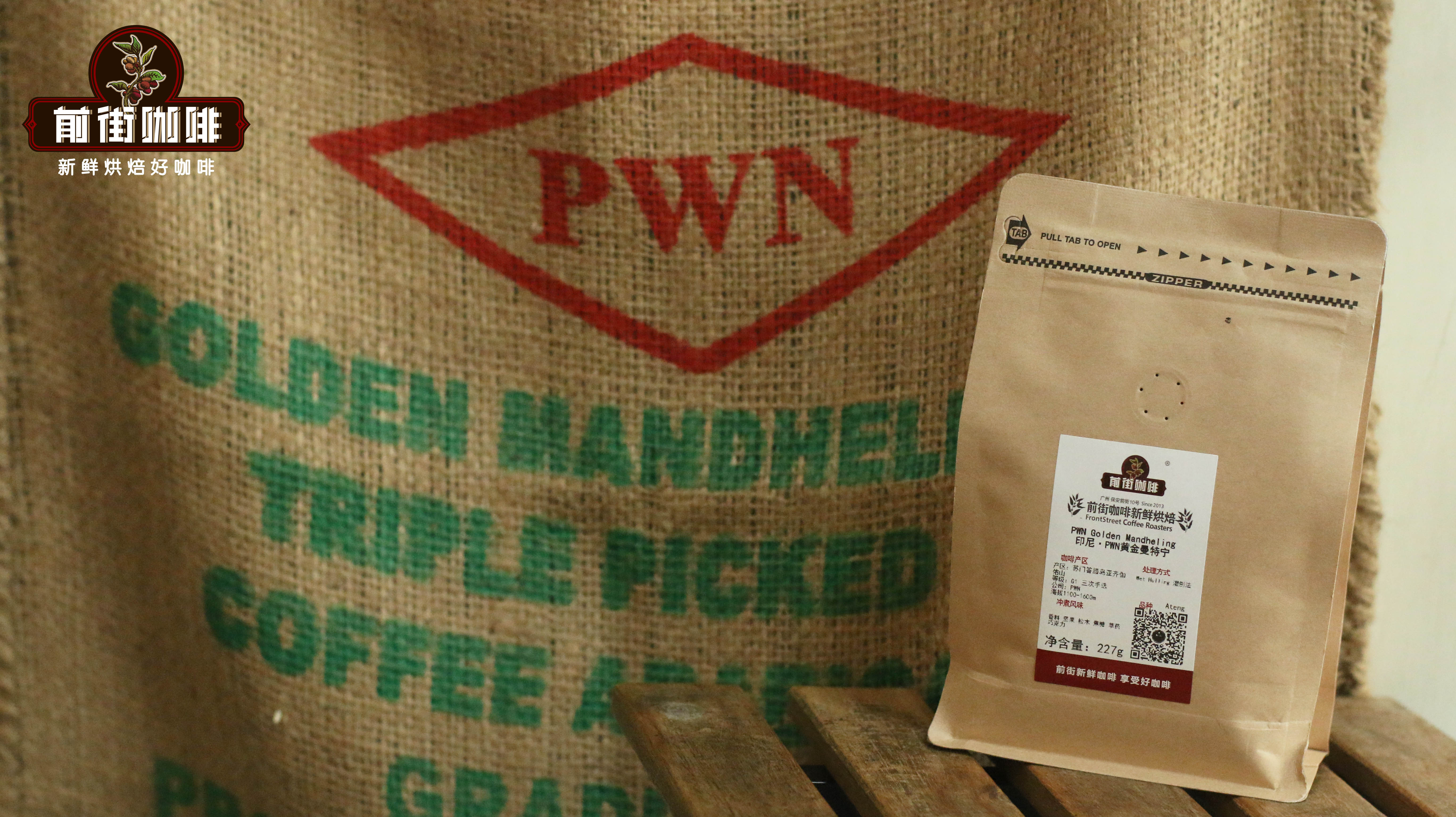
Golden Manning is a selection of coffee from Pawani, an Indonesian raw bean company. It is said that due to the strict screening system: one machine density color separation screening and four manual selection, the coffee beans finally show Mantenin with the same color and uniform bean shape. When dealing with raw beans, the Mantenin under the illumination of the eyes will emit a golden luster, so it is known as the "Golden Manning Coffee".
Authentic gold Manning, from Indonesia PWN raw bean company!
If you have a friend who knows the origin of the name Mandenin Coffee, you should have heard such a folk story: it is said that during the Japanese occupation of Indonesia during World War II, a Japanese soldier drank mellow coffee in a cafe, so he asked the shopkeeper, the boss mistakenly thought he asked where you were from, so he replied: Mandaining. After the war, the Japanese soldiers recalled the "Mantenin" they had drunk in Indonesia, so they asked the locals to transport 15 tons to Japan, which was very popular, and Mantenin's name came out.
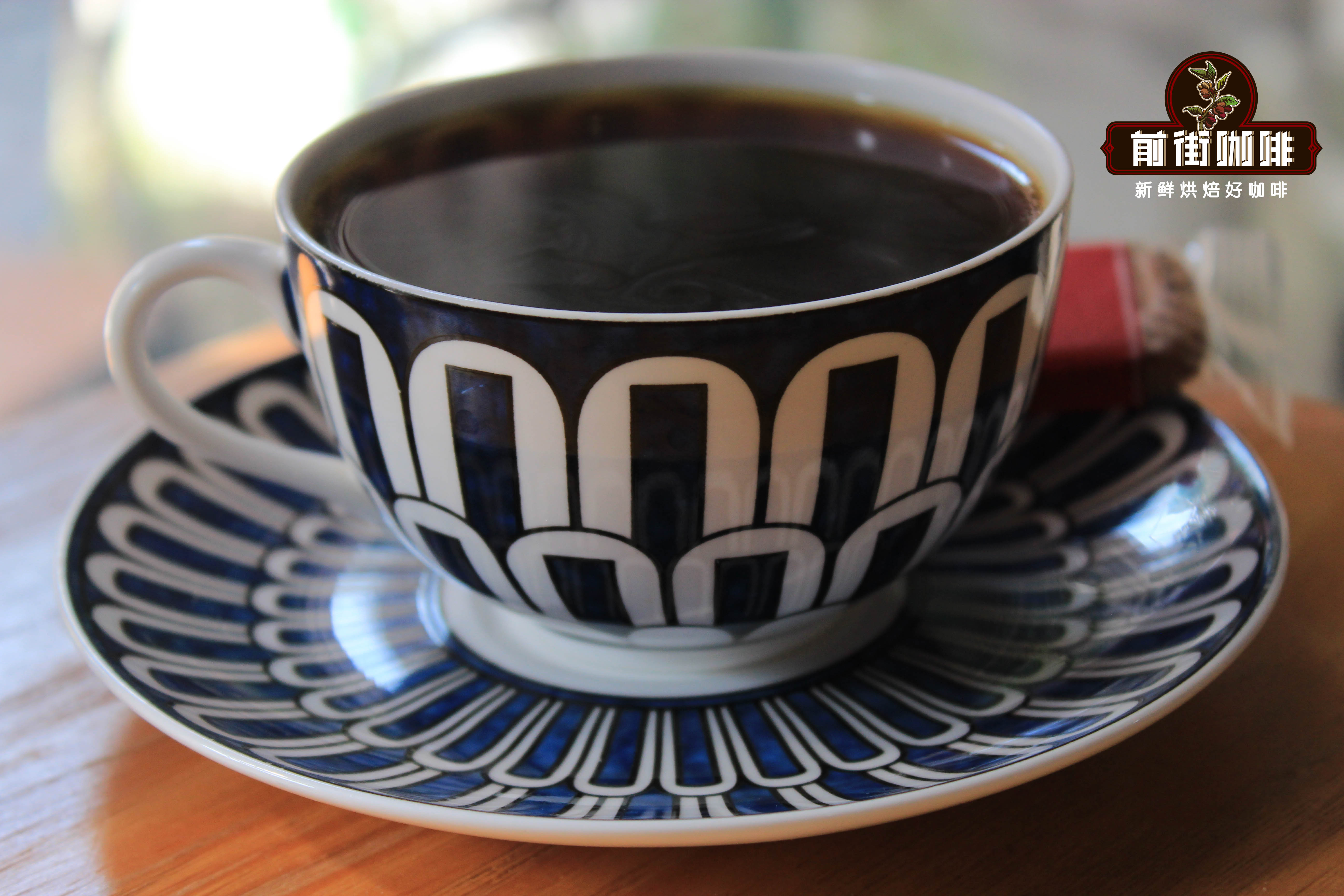
The first batch of Mantenin coffee beans exported to Japan was the coffee shop in the story. He discovered the huge business opportunity of Mantenin coffee and founded the PWN Pwanni Coffee Company in 1957. PWN mainly buys local high-quality batches of Mantenin raw beans, focusing on the production of boutique mantenin, gold mantenin is his family's signature product.
At that time, the Japanese took a fancy to Sumatran coffee after buying it for a long time, and gradually found that the quality of local beans was often mixed. So he paid more attention to the production of Mantenin and began to formulate strict standards and methods for screening defects, including bean density, specification, chromaticity and so on. The output of Mantenin needs 1 machine selection + 4 manual selection to remove defects, to ensure that the resulting Mantenin particles are complete, uniform, large and bright, but also reduce the soil and fishy smell of Mantenin. It is rumored that it is golden in the sun, so it is named "Golden Manning".
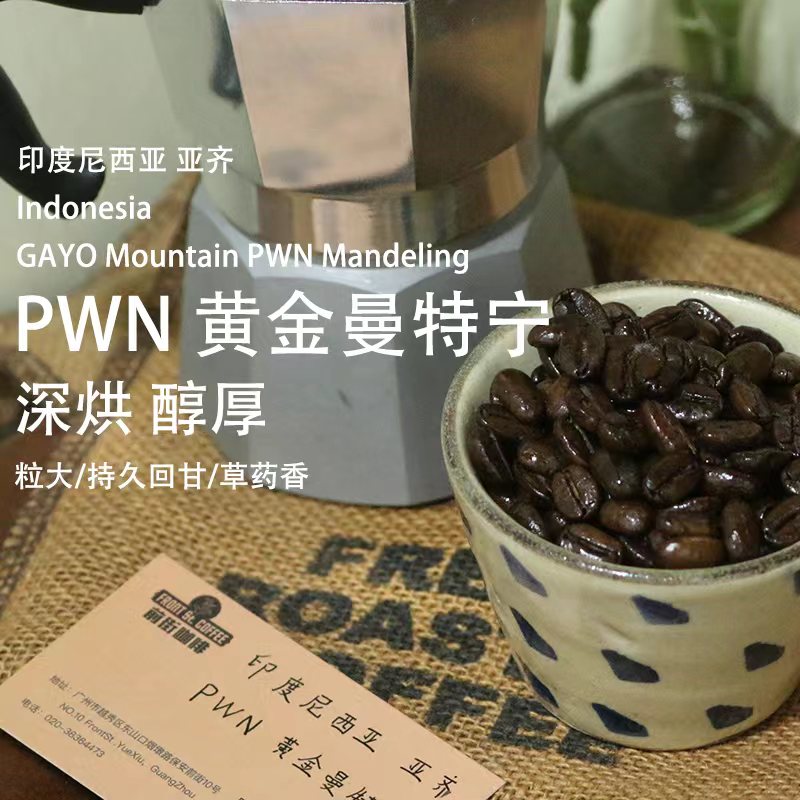
Front Street Coffee: PWN Gold Manning Coffee beans
Producing area: Sumatra, Indonesia
Grade: G1, hand-selected three times
Altitude: 1100m--1600m
Variety: Ateng
Treatment method: wet planing method
Flavor: nuts, spices, chocolate, herbs, caramel
With the growing market for boutique mantenin coffee, PWN realized the importance of the trademark and registered "Golden Manning" as an exclusive trademark in English earlier than the Japanese. Therefore, only the gold manning produced by PWN can be regarded as the real "golden manning", while the Japanese can only change the name to "tripod manning". The gold manning from Qianjie is of course an authentic product from PWN. You can identify the authentic gold manning according to the raw bean sack with the PWN logo and a certificate of origin signed by PWN. Qianjie displays these two logos in the Dongshankou store.
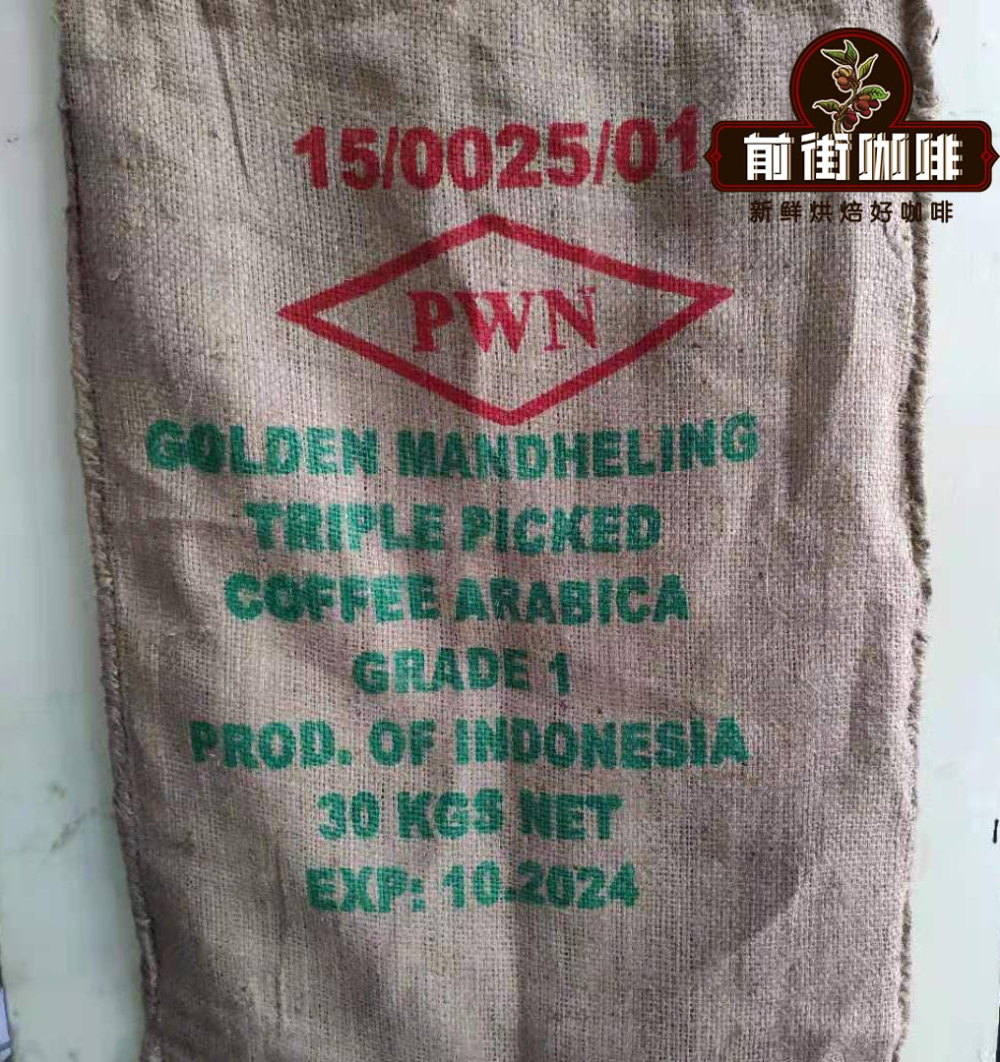
I have to mention the Indonesian wet planing method.
Sumatra is located at the equator, belongs to the typical island tropical rain forest climate, rainy and humid all the year round, but also prone to typhoons, coupled with the scarcity of fresh water resources. Local people can not use the traditional washing method to treat large quantities of coffee beans, let alone dry them in the sun for a long time. So in order to adapt to this extreme environment, local farmers developed a shorter treatment method-the wet planing method. The so-called wet planing is that the sheep skin wrapped in raw beans is "forcibly" planed when the skin of the sheep is not completely dry, so the raw beans are "naked" to complete the final drying.
The wet planing method is different from the traditional water washing method from the beginning of fermentation. The wet planing method uses less water and the fermentation time is short. After this short fermentation, a small part of pectin will remain on the bean shell. Coffee farmers sell coffee beans to buyers when the raw beans are dried for the first time with a moisture content of 35 prime 40%. The purchaser will shell the semi-dried shell beans directly and get raw beans by removing pectin and shell.
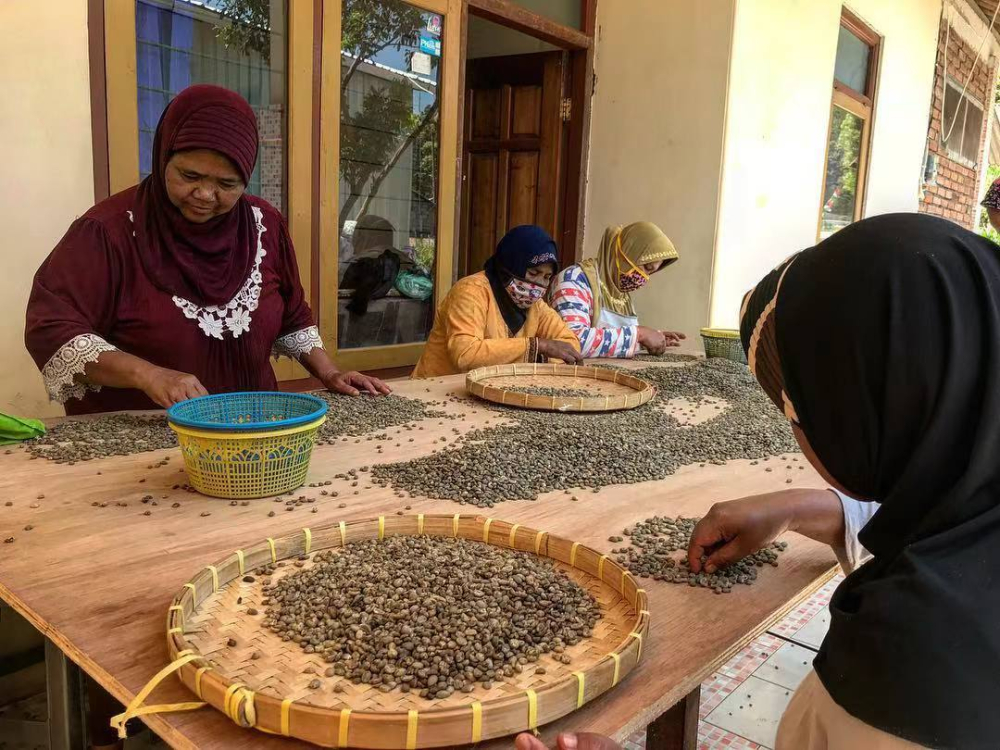
Although the time of each link is greatly shortened, the "naked bean" still absorbs moisture from the hot and humid air, so the Mantenin coffee has more dull aromas of wood, herbs and spices. The Mantenin coffee beans on the Qianjie bean list all use the wet planing method, which shows strong chocolate, black sugar and nuts after medium and deep baking, and the afterrhyme shows the tonality of herbaceous plants. Qianjie believes that Lin Dong Mantenin treated by wet planing has a typical "manning flavor", so it is added to the rations bean series.
This is how the front street rushes out of Manning's flavor.
After medium-to-deep roasting, the Mantenin coffee is thicker, but the coffee beans become looser, more absorbent and easier to extract when brewing. Therefore, Qianjie will use lower water temperature and thicker grinding degree to avoid negative bitterness caused by over-extraction of coffee.
Filter cup: KONO filter cup
Water temperature: 87 ℃
Amount of powder: 15g
Powder / water ratio: 1:15
Degree of grinding: medium and coarse grinding degree (Chinese standard No. 20 screen pass rate 70%)
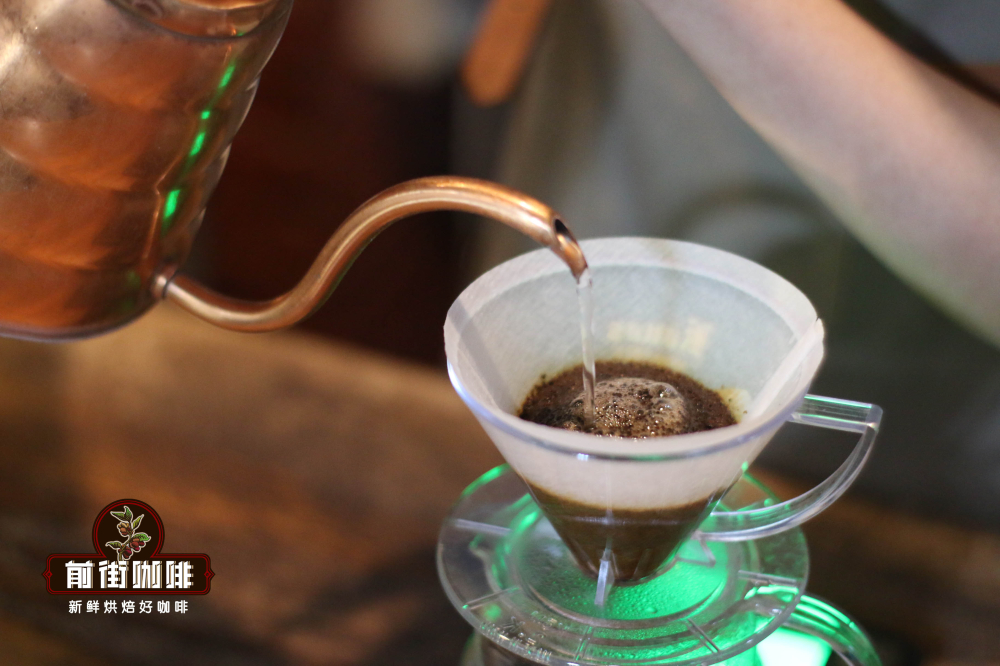
Moisten the KONO filter cup to make the filter paper fit better with the coffee filter cup, put 15g ground coffee powder into the water in the sharing pot at the same time, steam with 30g water for 30s, start injecting water around the center with small water flow for 30s, until 125g begins to segment, when the coffee powder layer drops to half the position of the filter cup, inject the second stage with the same method until 225g, and then remove the filter cup after all the dripping is completed.
The ground gold mantenin coffee powder has the aroma of nuts and baked bread, and the sweetness of caramel can be smelled in the brewing. The entrance of the brewed Mantenin coffee is spice and dark chocolate, with a mellow and clean taste, obvious taste and a long finish.
Professional coffee knowledge exchange more coffee bean information please follow the coffee workshop (Wechat official account cafe_style)
For more boutique coffee beans, please add private Qianjie coffee on Wechat. WeChat account: qjcoffeex
Important Notice :
前街咖啡 FrontStreet Coffee has moved to new addredd:
FrontStreet Coffee Address: 315,Donghua East Road,GuangZhou
Tel:020 38364473
- Prev
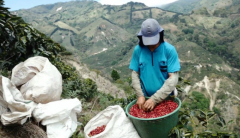
Evaluation of flavor characteristics of blueberry coffee beans in Stonehenge Manor with special treatment in Costa Rica.
Costa Rica is connected to Panama and has a diverse micro-climate. The origin of the manor name also has local cultural characteristics. The secret stone balls unearthed near the manor are stone carvings made by aborigines from 200 BC to 1500 BC. The manor is named after the boulder. After the introduction of coffee beans from Cuba in 1729, Costa Rica became the first coffee grower in Central America and the first to grow coffee for commercial value.
- Next
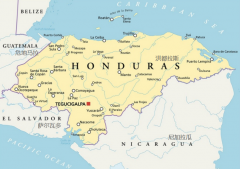
Honduran coffee beans: what are the flavor characteristics of sherry barrel coffee beans and litchi orchid coffee beans?
What is the difference between Shirley barrel and Litchi orchid flavor? First of all, these two coffee beans are coffee beans from Honduras. Litchi orchid and sherry buckets are both from Masaguara, a municipality in the province of Intibuc in Honduras, located in the south of the JessdeOtoro Valley, surrounded by mountains and hills, mainly dedicated to coffee cultivation.
Related
- Beginners will see the "Coffee pull flower" guide!
- What is the difference between ice blog purified milk and ordinary milk coffee?
- Why is the Philippines the largest producer of crops in Liberia?
- For coffee extraction, should the fine powder be retained?
- How does extracted espresso fill pressed powder? How much strength does it take to press the powder?
- How to make jasmine cold extract coffee? Is the jasmine + latte good?
- Will this little toy really make the coffee taste better? How does Lily Drip affect coffee extraction?
- Will the action of slapping the filter cup also affect coffee extraction?
- What's the difference between powder-to-water ratio and powder-to-liquid ratio?
- What is the Ethiopian local species? What does it have to do with Heirloom native species?

